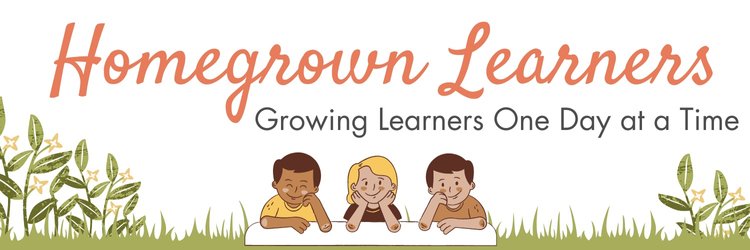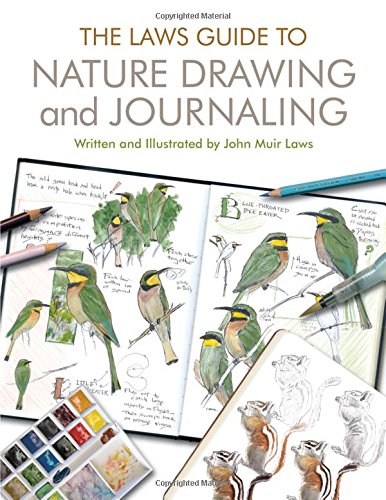Your first steps into the concept of nature study begin with your first walk outdoors. Why?
Because nature study is about observing. At its core, nature study is meant to incite delight and joy in your children as they begin to take in the beauty of God's Creation. They get to know it on a "first-name basis," as it were.
In our previous bird talk, we introduced a gentle way to jump-start your study, along with some tools. This little jumping off point required direct interaction with our feathered friends.
While this is perfect for your hands-on learner, what about the student who wants a more ethereal approach to the study of birds? What if you need to deepen your study of the birds?
I want to equip you with the tools your children need to discover the beautiful world of birds. I love Charlotte Mason's words - these particular ones always inspire me:
Living Books
A living book, one of the cornerstones of the Charlotte Mason method, is defined as, "... usually written by one person who has a passion for the subject and writes in conversational or narrative style. The books pull you into the subject and involve your emotions, so it's easy to remember the events and facts. Living books make the subject “come alive.” - Sonya Schaffer.
If you have any students like my own daughter, you can relate to my use of a living book to pique her interest in anything out of doors. Since I needed to find a creative way to introduce her to science or nature subjects, I counted on living books to do this.
Living books draw us back to the original reason we looked at the study of birds.
Why are we studying birds? Because God told us to. And why did God tell us to? I believe He wanted to reveal to us those greater lessons of life. The ones that can form the character. Those little lessons, line-upon-line, that increase our trust in the Father.
Recommendations:
"The Bird's Nest," by Christopher Von Schmid | This living book for ages 6-11, teaches the principle of trusting in God even when telling the truth could get you in trouble with man. Just as God cares for every detail about our bird friends, the Lord cares for us. Makes a great read-aloud. Available from Lamplighters, Grace and Truth Books, and Amazon.
"The Burgess Bird Book for Children" | Moving beyond strict memory-work, the Burgess Bird Book introduces birdie facts in story form. Children are introduced to relatable characters. These characters have a subtle story-line woven through the interview of the characters. Be sure and get the book with the illustrations. You (or your older children) can trace these illustrations from the books for color pages, too.
"The Boy Who Drew Birds" | A personal favorite in which a simple question and passionate curiosity led a young John James Audobon to a lifetime pursuit of the study of birds. He wanted to know if the birds that frequented his family farm would return the following spring.
"John Muir, Friend of Nature" | The biography the nineteenth-century naturalist, explorer, and writer, who was influential in establishing our national park system.
Living Music
While I'm not sure living music is a term, we can certainly apply the definition of a living book to that of music. Music as a form already lends itself to the concept of "living" vs. "dry." However, with music, it's more difficult to remove the subject quality.
All music does indeed tell a story.
It's just that not all stories told with music lend themselves to the good and the beautiful since they don't all call us towards an awe of nature or the Creator. For that, we turn instead to the masters in classical music, the music nature provides, and perhaps historical music.
Squilt, Classical Music Inspired by Birds | Nature has inspired some of the world's greatest composers. Whether you share these pieces just for their intrinsic musical value or incorporate them into a study of birds in your home, school, or co-op, we think they're a charming addition to any child's music appreciation repertoire!
"Birding by Ear" | This isn't music in the traditional sense, but the music the birds provide. A fun way to help train the ear to recognize birds, sight unseen.
Hymns That Mention Birds | From Lee's Bird Watching page, "We have many Christian Hymn Writers who have written fantastic songs. The hymns below are the ones that I have found that mention birds or fowls in some way or another." This fun little resource includes the link to the hymn in public domain along with identifying the keywords or phrase relating to birds.
Key Persons
Knowing the key persons and their role in any subject creates friends for us in our learning. Consequently, we can begin to feel that we know key persons in a study by spending time on the very things they were passionate about. What did they like? What drove their passion? Where are they from? What was their family like? How did their faith play a role in their life? What is their legacy?
John Muir | A brief online biography can accompany a picture study or living book read, such as, "John Muir, Friend of Nature."
James Harriott | Not strictly a birder, James Harriott was a veterinarian whose love of animals finds him included in our list of key persons for study. If you find your students enjoy studying animals, I recommend his series and the biography of the vet.
John James Audobon | Also known as, the American Woodsman, his passion for the study of birds has created a national treasure of art.
Alexander Wilson | The first individual who attempted to paint and describe all the birds of North America.
Picture Study
To begin a picture study habit with your children, start with introducing the artist. First of all, provide them with a biography of the artist and resources to living books. In our own home, we also chose one or two pictures from a single artist. I then created enough biography and artist information in my teacher preparation, including the type of art produced, to springboard their own study through observation and living books. Picture study was another avenue towards deeper learning.
You can play a game (though I'm not sure Ms. Mason would call it a game), where the children study the picture silently for about five minutes. Next, turn the image over and try to recall as many details as possible. Students who aren't keen to share verbally can attempt to sketch out what they recall about the picture.
In addition, the entire Audobon collection can be found here. You can also do a search for images of birds found in the Bible.
Mr. Wilson's bird plates can be found here.
Word Study
While you read through your living books, make a note of words you'd like to know more about. A word study involves not just noting the actual definition, but defining the keywords in the definition. Also, if you want to take it a step further, you can study how the word is used in Scripture. This helps you gain God's mind about the word.
Here are a few to get you started:
Putting it All Together
When I began this study of birds, I was surprised by just how much information there was about birds, how to study them, and ways to study them. If you'd like to make a cohesive unit study out of the information in the three posts, Why Watch the Birds, Classical Music Inspired by Birds, and this one, here are some suggestions.
- Don't worry about a right way to do it. Just dig in. Let your children lead the way. Birds are an easy delight-directed study. Just observing the birds can be fun, so pack a picnic and have a birding day.
- Begin with the Word Study elements of the articles. This lays a strong foundation for understanding and results in a God-perspective on the study. Finally, move into the autobiography and picture study, weaving living books throughout, and then sprinkle in the music.
- Start with the music. Study the pieces, the bird sounds, and the hymns. As a result, you will have a well-rounded music appreciation course.
Regardless of how you choose to study the birds, you can be sure that God will reveal little truths along the way.
The Boy Who Drew Birds: A Story of John James Audubon (Outstanding Science Trade Books for Students K-12) Audubon's Birds of America Coloring Book
Audubon's Birds of America Coloring Book Laws Guide to Nature Drawing and Journaling, The
Laws Guide to Nature Drawing and Journaling, The The Camping Trip that Changed America: Theodore Roosevelt, John Muir, and Our National Parks
The Camping Trip that Changed America: Theodore Roosevelt, John Muir, and Our National Parks John Muir, Friend of Nature. (Discovery Book)
John Muir, Friend of Nature. (Discovery Book) Audubon: Painter of Birds in the Wild Frontier
Audubon: Painter of Birds in the Wild Frontier Audubon: Painter of Birds in the Wild Frontier
Audubon: Painter of Birds in the Wild Frontier Every Living Thing: The Warm and Joyful Memoirs of the World's Most Beloved Animal Doctor (All Creatures Great and Small)
Every Living Thing: The Warm and Joyful Memoirs of the World's Most Beloved Animal Doctor (All Creatures Great and Small) Handbook of Nature Study
Handbook of Nature Study The Burgess Bird Book for Children by Thornton W. Burgess (April 23 2003)
The Burgess Bird Book for Children by Thornton W. Burgess (April 23 2003) Fifty Favorite Birds Coloring Book (Dover Nature Coloring Book)
Fifty Favorite Birds Coloring Book (Dover Nature Coloring Book) Channel Craft Audubon Bird Call and Bird Identification Cards Bundle
Channel Craft Audubon Bird Call and Bird Identification Cards Bundle Birding by Ear: Eastern and Central North America (Peterson Field Guides(R)) [Audio CD]
Birding by Ear: Eastern and Central North America (Peterson Field Guides(R)) [Audio CD] The Bird's Nest (Rare Collector's Series)
The Bird's Nest (Rare Collector's Series) Audubon's Birds of North America: The Complete 500 Paintings by John James and Sheila Buff [ntroduction]. Audobon (1990-05-03)
Audubon's Birds of North America: The Complete 500 Paintings by John James and Sheila Buff [ntroduction]. Audobon (1990-05-03) Twelve Audubon Bookmarks (Dover Bookmarks)
Twelve Audubon Bookmarks (Dover Bookmarks) John James Audubon: The Making of an American
John James Audubon: The Making of an American American Dictionary of the English Language (1828 Facsimile Edition)
American Dictionary of the English Language (1828 Facsimile Edition) Alexander Wilson: The Scot Who Founded American Ornithology
Alexander Wilson: The Scot Who Founded American Ornithology Bird Life Stories
Bird Life Stories Latin for Bird Lovers: Over 3,000 Bird Names Explored and Explained
Latin for Bird Lovers: Over 3,000 Bird Names Explored and Explained Colore Watercolor Pencils - Water Soluble Colored Pencils For Art Students & Professionals - Assorted Colors for Sketch Coloring Pages For Kids & Adults - Vibrant Colors For Drawing Books - Set of 72
Colore Watercolor Pencils - Water Soluble Colored Pencils For Art Students & Professionals - Assorted Colors for Sketch Coloring Pages For Kids & Adults - Vibrant Colors For Drawing Books - Set of 72 Artist's Choice Sketch Pad ,75 sheets, Pack of 2
Artist's Choice Sketch Pad ,75 sheets, Pack of 2 Keeping a Nature Journal: Discover a Whole New Way of Seeing the World Around You
Keeping a Nature Journal: Discover a Whole New Way of Seeing the World Around You















![Birding by Ear: Eastern and Central North America (Peterson Field Guides(R)) [Audio CD]](https://images-na.ssl-images-amazon.com/images/I/41hGp5717XL.jpg)

![Audubon's Birds of North America: The Complete 500 Paintings by John James and Sheila Buff [ntroduction]. Audobon (1990-05-03)](https://images-na.ssl-images-amazon.com/images/I/51H3H6uqWTL.jpg)













